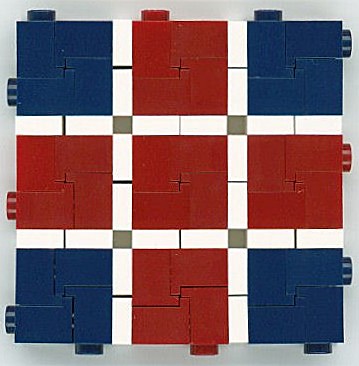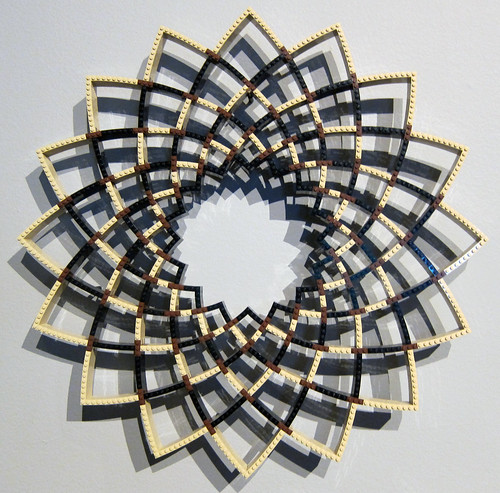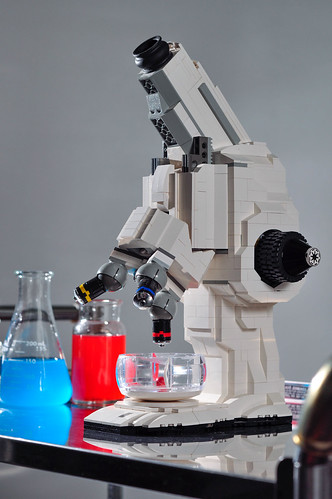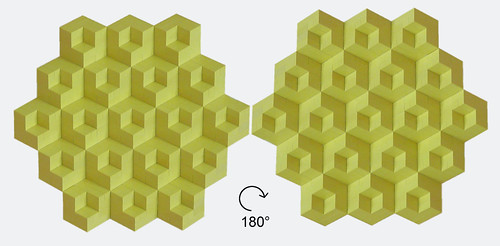
But the series of articles really bugged me. The meme that runs through all of these is that "at last, LEGO gives us a woman scientist", or "Lego breaks the plastic ceiling", etc. I really think this started as a post somewhere (Huffington) and then got picked up by bloggers at a bunch of different news sites. The idea seems to be that LEGO has been keeping women down all these years, and now they can finally become scientists. Okay, let's look more closely. First, this just isn't true. If you do a quick search you can find out that there have been a handful of minifigs called "scientist" before, and three of them were women. Okay, these all came in a First LEGO League set (which was perfectly gender-balanced, btw), and they weren't detailed figs, so maybe we should discount them.

Also in the meme-busting department, we seem to have quickly forgotten the Friends set Olivia's Invention Workshop, where Olivia seems to simultaneously be performing chemistry experiments, inventing robots, and solving mathematical equations (and, while I do not know of every LEGO set, I cannot find any official set that has a boy doing these things). But, of course, to acknowledge sets like that would go against another very popular meme that the Friends line is this horribly oppressive series of sets that forces girls to giggle in hair salons and cupcake bakeries rather than, say, climb trees, learn karate, fly planes, skateboard, work on computers, camp, and drive sports cars, speedboats and jetskis. But what are facts in the face of a good meme?

Okay, let's go on to the nature of LEGO itself. Don't these editorial writers realize that LEGO figs are completely interchangeable? My son figured out at three that you can make whatever fig you want by switching the heads and hats etc around. So if you wanted to make a fig a woman, that would take about two seconds. But, of course, that begs the question, what makes a woman in LEGO fig world? Basically two things - overdone lipstick (and a lack of beards) for the faces and/or long hair. Leaving aside that men can have long hair and women short hair, and that not everyone wears excessive makeup in the workplace, for the first ten years of minifigs all figs had the same generic smiley face, and if figs are wearing hats, there is no hair piece. So tons of figs have no gender whatsoever. You can decide to call this one a man and that one a woman based on your complete whim.

I intentionally selected that fig because she, or he, is a doctor, and I wanted to point out that the very first doctor fig back in 1978 was ... drumroll please ... a woman (at least in that she had 'girl hair').

Indeed, the two doctor figs in 1980 were women, in 1981 there were two women and two non-gendered doctors (i.e. generic faces and hats), in 1982 another woman, and finally in 1985 we broke the plastic ceiling and a man could become a doctor! (Or maybe this was just a woman with short hair?) So in medicine, it seems that the high heel is on the other foot. Of course, those are doctors, and doctors aren't scientists, right? (My sister-in-law the neurologist would certainly dispute that). Let's get back to our proscribed story line and talk about how LEGO has been keeping women down by having men be all of the scientists (leaving aside, of course, the scientists from the aforementioned First LEGO League set and anyone in the medical sciences) (oh, Dan below mentioned marine biologists in the Divers line, so this is just the list of those with official names including the word 'scientist'). Here they are:






Okay, these can be grouped into three categories. The first three on the list above come from various space sets, in which they often had as colleagues women who were astronauts (again, most astronauts are also pretty serious scientists). The next group aren't really scientists, they're mad scientists. I've known some fairly odd people in my role as a chemist, but none of them was building a monster out of spare body parts dug up by their hunchbacked sidekick. I don't really think we can count these guys. Finally we have poor Ron Perkins, who has a brief role in the 2002 Spider-Man movie, only to be murdered by Willem Dafoe's Green Goblin. I really wouldn't call most of these guys 'scientists' in the sense that we see them doing science (I guess I'd leave out a couple of the guys from the space sets). I'd love to see sets where LEGO showed scientists at work looking through telescopes and microscopes, mixing chemicals and the like. A little while ago there was a big push by some agenda-driven posters to get the Female Scientist Minifigure Cuusoo proposal over the 10,000 mark. But what many (most?) of the proponents failed to see was that that set idea was not cool because it showed women scientists at work, but because it showed scientists at work, and I think that really tipped their hands that they're not really interested in science at all, but rather in their view of gender politics.

So, back to my new favorite fig. I love you, but don't pay attention to all of those news bloggers and pseudo-social-scientists who think the important thing about you is that second X chromosome. I could give a rip about your gender. What gets me excited is that you're a freakin' scientist! (And, just to fly my own flag, you're a chemist to boot.)

































